Like the best part of French onion soup, and then some
Onion and Cabbage Panade: a wintry dish to celebrate daylight saving time
In just a few short days, we’ll change the clocks. Oh, joy! I’m happy to lose an hour of sleep if it means getting longer days back. I struggle through every winter, viewing the darkness as a deadline for my day. The moment it gets dark at 5 (or even 4:30), I immediately wind down. My work for the day ends, and I’m ready for dinner, and bed not long after that. You’d think it would get easier after all these years, but it only seems to get harder. I live for warmer weather, longer days, and abundant summer produce.
The produce part is still months away. If we’re lucky, we might see the first spring things popping up at farm stands in late April or early May. But that’s OK! For now, let's enjoy the hardy winter dishes and ingredients since that’s what we have. Soon enough, we’ll be over ramps and rhubarb and craving soups, stews, apples, and pumpkins again.
Today’s recipe is perfect for these still chilly—albeit longer—days when we need something to fill our bellies and sustain us. I’m not sure if it will snow again (at least not where I am), but think of this dish as the perfect thing to eat after a day spent on the slopes or playing in the snow. It’s a humble assemblage perfect for serving a small group—perhaps on Sunday afternoon to mark the start of daylight saving time?
What is a panade?
Panade is a French cooking term that, loosely translated, means "bread thing." Classically, it's a mixture of bread, milk, and seasonings used to keep things like meatloaf or meatballs moist and flavorful. But this kind of panade is a little different: Think of the best part of French onion soup, but without much soup. The bread soaks all of the broth up, so what you get is kind of a soupy bread pudding with plenty of cabbage and a crusty, cheesy top. It's rustic comfort food at its best.
I’m not sure if Judy Rogers, the late great chef and owner of Zuni Café, invented this version of panade, but she certainly popularized it. It’s not currently on the menu there, but I hope it still makes an appearance now and then. Writing this, I’m tempted to find an excuse to go to San Francisco just so I can eat at Zuni. I’ve waxed poetic before about this beloved and enduring restaurant (open since 1979!) that still feels very of the moment.
Going there brings back a comforting familiarity and nostalgia for the 90’s, when I spent a lot of time in San Francisco (and hence at Zuni). I loved joining my colleagues—who were also my friends—for a post-shoot dinner there to unwind and nourish ourselves. It was the unofficial canteen of the Martha Stewart Living staff when we were on location in SF, which was often. Those were the days!
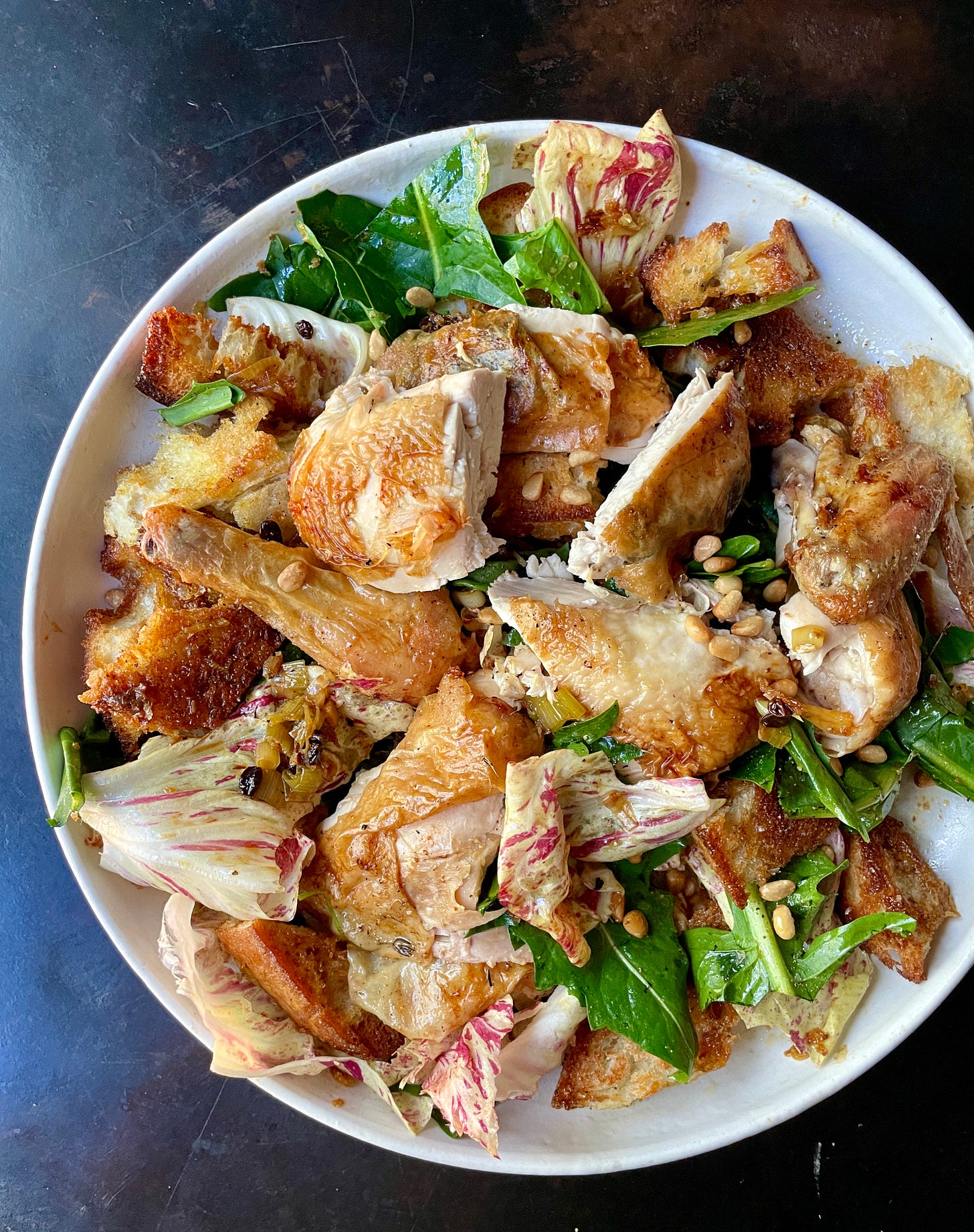
This dish takes a little bit of time to assemble, but once you have, you can put it in the fridge to bake later, just as you would a lasagna or bread pudding. It can hang out for a day or two until you’re ready to eat it. Just let it sit out a little while at room temperature before baking, and add a little extra time in the oven.
Onion and Cabbage Panade
Serves 6 to 8
4 large Spanish onions (2 to 3 pounds)
1 tablespoon olive oil
2 tablespoons unsalted butter, divided
Kosher salt
About 1 cup water, as needed
¼ cup Madeira, dry sherry, or cognac (optional)
Freshly ground pepper
½ large head green cabbage (about 1 pound), shredded
3 to 4 sprigs thyme
1 sourdough boule, sliced ½ inch thick
4 cups vegetable stock or beef or chicken stock, or more as needed
6 ounces Gruyère and/or fontina cheese, grated (about 2 cups)
2 ounces Parmesan cheese, grated (about 1 cup)
Slice the onions in half lengthwise (from root to stem end), peel them, and slice about ¼-inch thick lengthwise (in the same direction).
Heat a large pot, braiser, or a shallow Dutch oven over medium-high heat and add the oil and 1 tablespoon of the butter. Add the onions and ½ teaspoon salt and toss gently using tongs. If the onions are steaming and not browning after the first 5 minutes, turn the heat up to high. Cook for 12 to 14 minutes, stirring only occasionally so the onions have a chance to brown, by which time they should be soft and wilted, and starting to turn brown all over.
Add ¼ cup water and the Madeira, sherry, or cognac (if using; if not, increase the water to ½ cup) and use a wooden spoon to scrape the bottom of the pan. Reduce the heat to low and cook for 25 to 30 minutes, stirring occasionally. Add more water, ¼ cup at a time, if the onions start to stick. Season with pepper to taste.
Add the cabbage (and a few tablespoons of water if needed), raise the heat to medium, and add ½ teaspoon salt, the thyme, and more pepper. Cook, tossing occasionally, until wilted, then cover and continue cooking for 15 minutes, tossing occasionally, until soft. Uncover and reduce the heat to medium-low. Cook for 25 to 30 minutes, stirring occasionally and adding ¼ cup water if needed to prevent sticking, until very soft and brown. Remove the thyme stems and adjust the seasonings. Transfer to a bowl.
Add ½ cup of water to deglaze the pot, scraping up any brown bits. Pour over the onions in the bowl and rinse the pot.
Heat the oven to 325°F. Melt 1 tablespoon of the butter in the same pot and then remove from the heat. Spread out half of the onion mixture on the bottom of the pot, followed by a layer of bread slices, tearing them to fit and create an even layer. Follow with the remainder of the onion mixture. Top with the remaining bread slices. You may not need all of the bread; just use enough to fit.
Add 3 cups of the stock, or until you see it welling up to the same level as the top of the bread. Press down lightly with a spatula to help the bread absorb the liquid. Let sit for 10 minutes, then add the remaining cup of stock (or more as needed) to maintain the same level. Bring to a simmer on the stovetop and cover tightly with foil or with the lid of the pot. Place on a parchment- or foil-lined baking sheet and bake for 30 minutes, until steaming hot throughout. Remove the foil, top with the cheeses, and cook for 30 to 40 minutes longer, until the cheese has browned and the liquid is mostly absorbed. Serve hot in bowls.

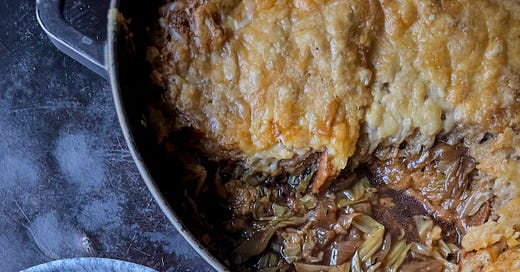



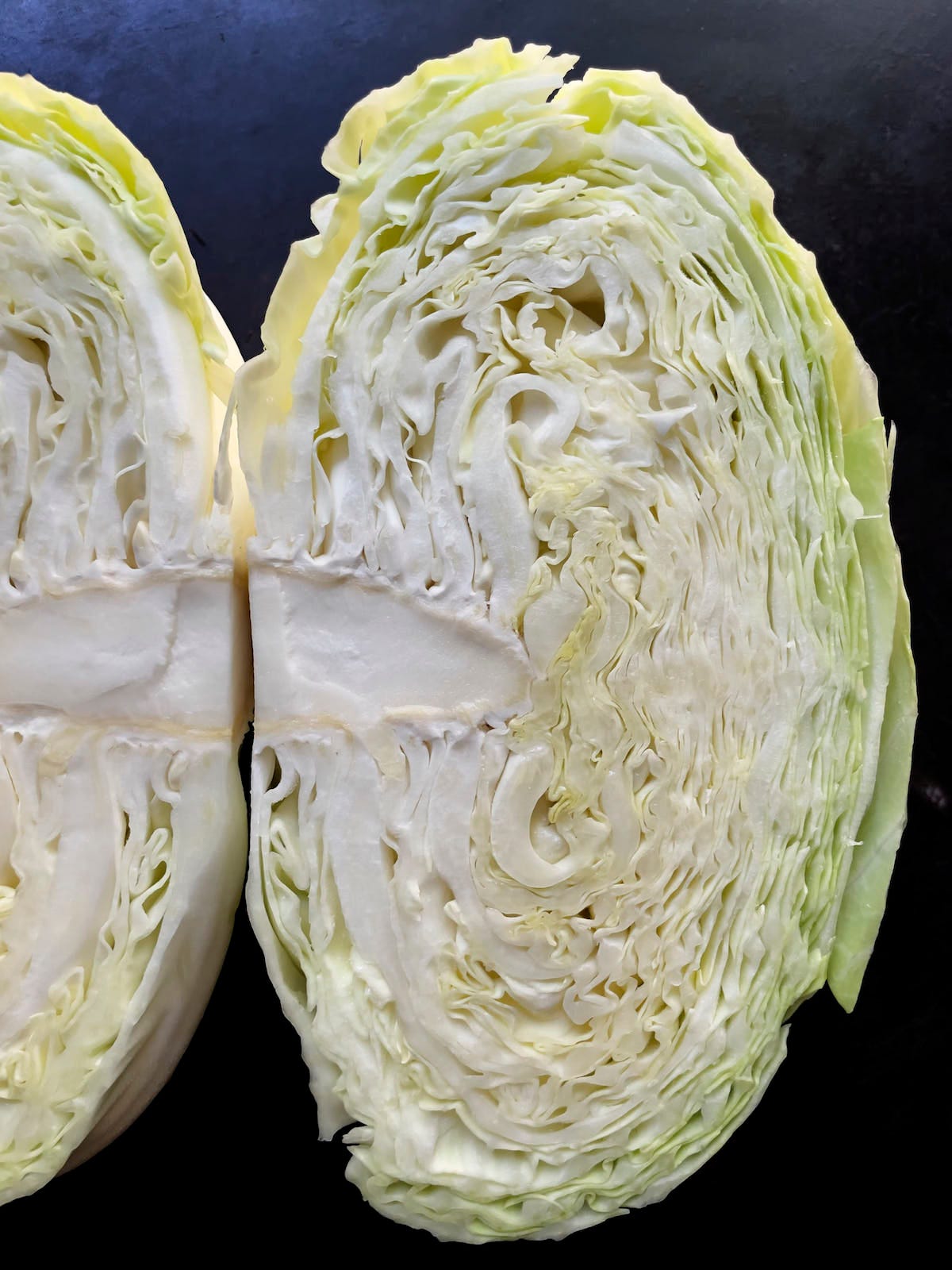

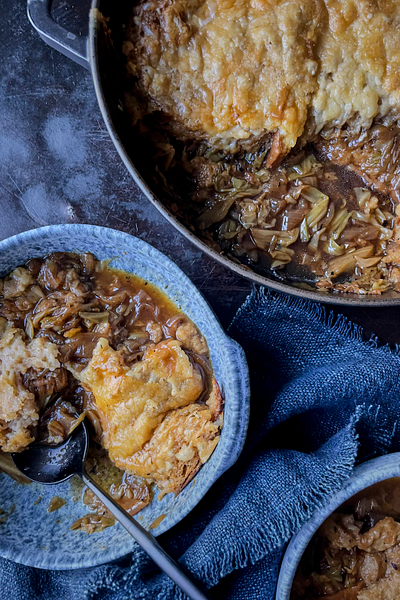
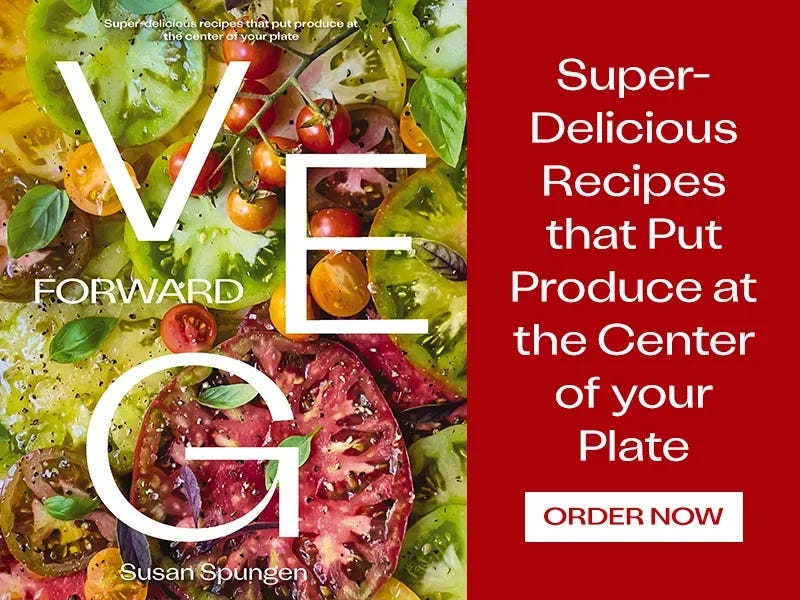
Thanks for the recipe Susan. I made the Panade on the weekend. I used a Sourdough Spelt bread that's made by a French baker here in Nova Scotia (really good bread!) and some compte instead of the gruyere. It was delicious! I recall reading Richard Olney's recipe for Panade a few years ago and always wanted to make it. I really like the cabbage in your recipe. Thanks again.
Thank you Susan. This dish reminds me of Pissaladière an old Provençal favorite that I first tasted across the bay from Zuni when I worked at Chez Panisse in the early eighties. (Am I dating myself?!) Anyway I would meet you ten years later at my first restaurant in NYC, ALVA.
PS
Love the Zuni chicken bread salad, sort of a riff on Italian Panzanella. I especially love the pine nuts and currants. Might just go out and get a roast chicken to make the Zuni salad tonight!
Gracias!